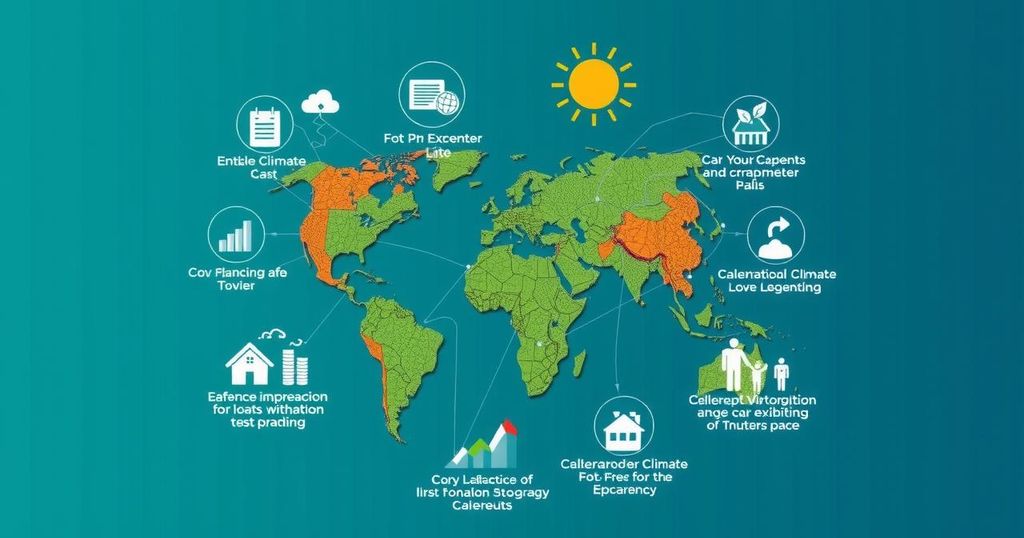Guidelines for Enhanced Climate Action through Wildlife Conservation Integration

On October 21, 2024, IFAW launched guidelines to integrate wildlife conservation into Nationally Determined Contributions (NDCs) at COP16 in Cali, Colombia. Simon Addison, IFAW’s Climate Advisor, highlighted these guidelines as offering ten practical steps for nations to include wildlife in their climate action plans, emphasizing the economic and ecological benefits of such integration as nations prepare to update their commitments in 2025 under the Paris Agreement.
On October 21, 2024, in Cali, Colombia, the International Fund for Animal Welfare (IFAW) unveiled a pivotal set of guidelines aimed at aiding governments and policymakers in incorporating wildlife conservation into their Nationally Determined Contributions (NDCs). This initiative was launched during the UN Convention on Biological Diversity’s 16th Conference of the Parties (COP16) and represents a significant step forward in addressing climate change effectively. The timing of this launch is particularly salient as nations prepare to revise their NDCs in 2025, adhering to the accords established by the Paris Agreement. The guidelines present actionable recommendations for countries, emphasizing the critical need to acknowledge and bolster the role of wildlife in enhancing carbon sequestration and fostering climate resilience. Simon Addison, IFAW’s Climate Advisor, highlighted the guidelines’ practical application, stating that they provide a “clear, practical roadmap to harness the power of wildlife conservation for mitigating climate change” along with strengthening climate resilience and adaptation. The guidelines consist of ten actionable steps, offering nations a structured approach to integrate wildlife strategies into their climate plans, thereby strengthening biodiversity alongside climate action. Historically, current climate initiatives have largely neglected this integrative approach. The guidelines point out that a minimal number of countries, particularly in biodiversity-rich but climate-vulnerable regions, have incorporated wildlife considerations into their greenhouse gas inventories or overall climate strategies. This oversight presents a substantial risk of losing an essential component that could bolster both climate resilience and the preservation of biodiversity. Furthermore, Mr. Addison noted, “We are providing nations with tools to tackle wildlife conservation not just as an environmental priority but as a cornerstone of climate action.” This approach emphasizes the necessity of making wildlife a fundamental aspect of national climate strategies, enhancing both mitigation and adaptation efforts. Key highlights include: 1. Wildlife Contribution to Carbon Sequestration: The guidelines underscore the importance of keystone species, such as elephants, whales, and apex predators, in ecosystems that promote carbon storage. Their protection and management are vital for boosting carbon capture while simultaneously improving ecosystem health. 2. Ten-step Integration Framework: The guidelines delineate a structured process for integrating wildlife conservation into national greenhouse gas inventories, beginning with the identification of priority species for protection. 3. Economic Gains through Wildlife Conservation: The guidelines outline how conservation, rewilding, and restoration projects can yield economic benefits, especially in biodiversity-rich Least Developed Countries. Such initiatives are instrumental in fostering climate-resilient development and generating sustainable livelihoods for vulnerable communities, while also unlocking new avenues for carbon finance opportunities.
The importance of integrating wildlife conservation into national climate action plans has never been more evident, given the ongoing climate crisis and its profound impact on biodiversity. As nations gear up to update their commitments under the Paris Agreement, there is a fundamental need for strategic frameworks that combine climate goals with the preservation of wildlife. The guidelines launched by the IFAW provide a timely response to this need, offering a comprehensive approach that recognizes the interconnectedness of climate action and biodiversity conservation. Climate strategies that include wildlife considerations not only yield ecological benefits but also enhance socio-economic resilience in communities dependent on natural resources.
The launch of the IFAW’s guidelines marks an essential advancement in merging wildlife conservation with national climate action frameworks. By providing actionable steps and emphasizing the significance of biodiversity in climate strategies, these guidelines aim to empower nations to enhance their NDCs effectively. Integrating wildlife conservation not only serves ecological and environmental purposes but also fosters economic benefits and sustainable development. As the world confronts pressing climate challenges, the synergy between climate action and wildlife protection must be emphasized for holistic resilience and sustainability.
Original Source: www.ifaw.org






